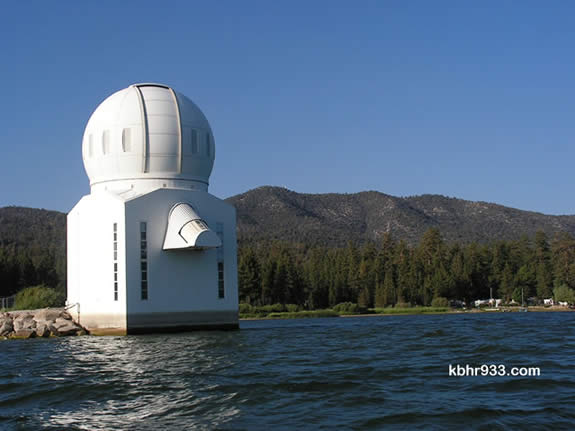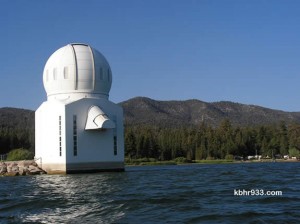

Big Bear Lake, CA, February 1, 2014 – Have you ever wondered what that little white building with the big white dome on top is doing sitting on the north shore of our lake? It’s looking at the sun.
The Big Bear Solar Observatory was built by the California Institute of Technology in 1969, but management of the BBSO was transferred to the New Jersey Institute of Technology in 1997. The location is optimal due to the clarity of the sky and the presence of a body of water. At 6,742 ft above sea level, the observatory is above a significant portion of the atmosphere and the water provides a cooling effect on the air surrounding the building eliminating ground heat radiation waves that cause optical problems.
The BBSO operates 4 telescopes. The main bulding houses the NST, which at 1.6 meters is the largest aperture solar telescope in the world. While it can only observe less than 10% of the sun at a time because of its high magnification, it tracks that portion from sunrise to sunset and is able to see features on the Sun less than 50km across.
The small dome contains two telescopes. One looks at solar flares–and since this unit is able to see the whole sun, it acts as a “finder” for the NST, picking a target for the NST to observe.
The other measures earthshine, which is the light reflected from the Earth visible on the Moon’s night side. The rectangular building on the shoreline houses the Global Oscillation Network Group, or GONG telescope, one of six identical telescopes around the world studying the internal oscillations and seismology of the Sun.
Funding for the Big Bear Solar Observatory is primarily through grants from NASA, the National Science Foundation, and the U.S. Air Force.

